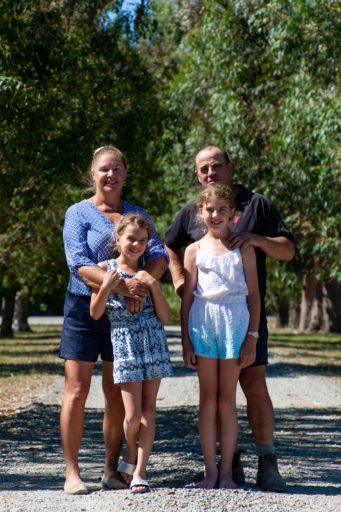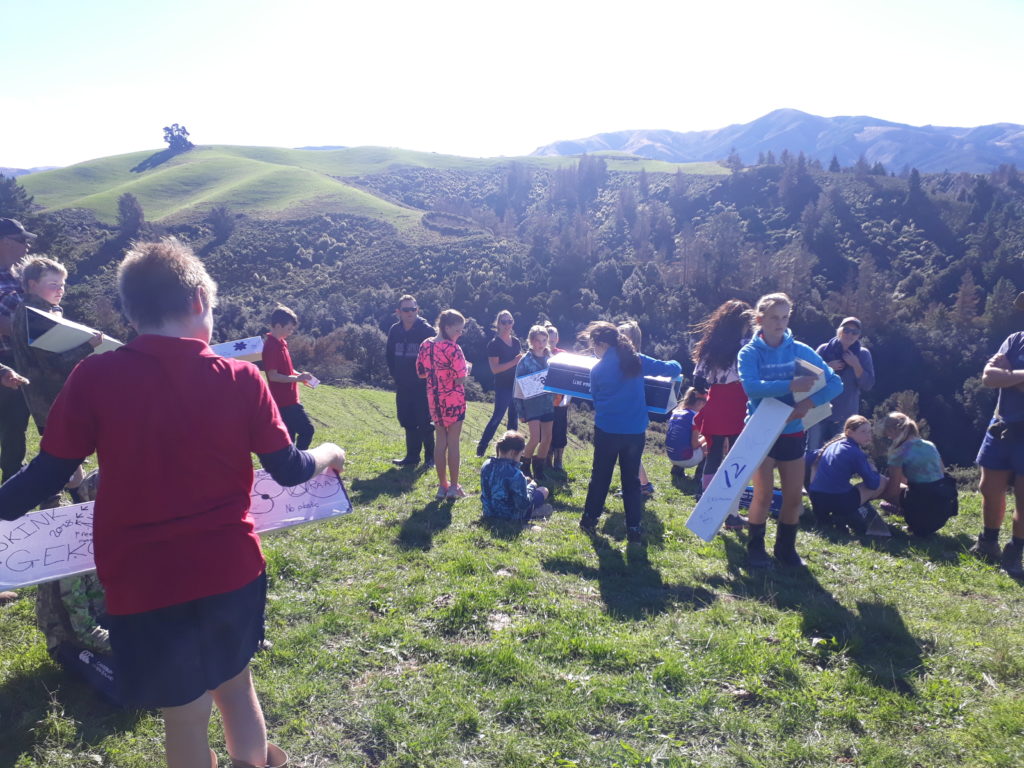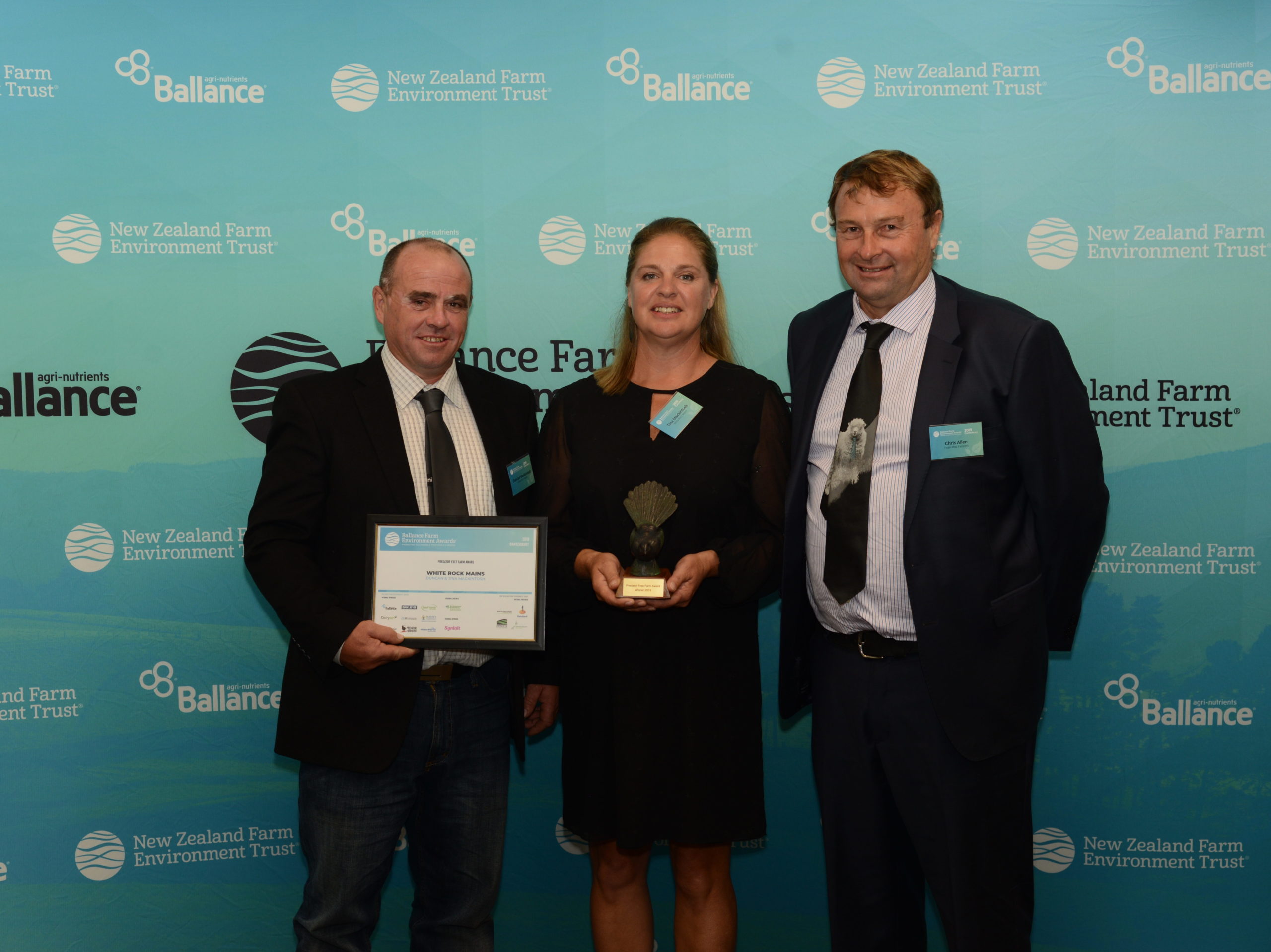Duncan and Tina Mackintosh farm White Rock Mains, near Rangiora in North Canterbury – a 1056 hectare property brought by Duncan’s great-grandfather back in 1909. Earlier this year they were Canterbury regional winners of the Ballance Predator Free Farm Award, in recognition of their predator control efforts. The farm is a mix of sheep, beef and dairy support and includes a 92 hectare block of regenerating beech forest which is under QEII Covenant.

“We knew there were possums in there,” says Tina, “Since we’ve had ownership off the family, we’ve employed a possum hunter who kills the possums and harvests the fur in return for his time. The first year he dabbled and caught 330 possums. The next year he caught 1200! He gave the whole farm a good run over, trapping in the hedges etc. That’s the most that have been caught in one year.”
“We were caught by surprise,” adds Duncan. “We were seeing possums on the roads, but had no idea how many were out there.”
Results are starting to show.
“The birdlife is incredible,” says Tina. “We’ve seen one tūī so far and hopefully more will return. There’s lots of bellbirds. The QEII block includes mature natives and we’ve been told a lot of the vegetation is significant. Our oldest trees are in there.”
The possum count is now up to 1700, including 180 possums caught since the start of winter this year. In recognition of their predator control, restoration and conservation education work, Tina and Duncan were Canterbury regional winners of the 2019 Ballance Predator Free Farm Award.
Tina and Duncan wanted to find out more about what was growing in their bush block and tracked down a botanist, Miles Gillar associated with QEII Trust, who was keen to investigate the plants as part of the remnant block’s QEII assessment.
“Miles found a rare clematis he was really excited about,” says Tina. “He gave us three pages double-sided of plant names, all in Latin, so I’m not sure yet what all of them are.”
“What makes the block unique is that it has a lot of big bluffs,” Duncan explains. “The gully has never had stock or deer. It’s very untouched. The only wildlife in there have been wild pigs travelling through.”
The beech block isn’t the only part of the farm up for restoration and protection.
“There are a few ponds and wetlands that have always been here that we’re in the process of reopening and tidying up,” says Tina. “We completed clearing one and we can hear frogs there again, although so far we haven’t seen or caught any. Now there are other ponds and wetlands we’re targeting to work on in the coming year.”

“We’ve got ducks and pūkeko and had 5 little shovellers here briefly,” says Duncan. “We don’t normally see shovellers and I haven’t seen them in the last couple of weeks, but the place where we saw them is where we’re planning to create a big wetland.”
“Duncan’s father would have loved to have seen what we’ve done,” adds Tina. “He was a naturalist himself so we’re following and finishing his journey.”
Tina and Duncan are also keen to encourage the next generation of local children to continue the pest control work. For the last 2 years they’ve organised a local ‘Critter Hunt’ targeting pest species like rabbits, hares, possums, feral cats and goats.
“The wee kids catch mice,” says Tina. “The Critter Hunt stems from the fact that Duncan and a friend are active hunters and our kids are coming up to hunting age, so we created the Critter Hunt for kids in the area. It’s about getting out with Dad, learning about pests and the damage they do and learning about and fostering an appreciation for native birds and plants. For me, it’s also about getting kids off their devices and out in nature so that when they’re older they’ll want to protect nature and will understand about pests.”
The Critter Hunt is for children up to the age of 14. Duncan and Tina’s own children, Casey (11) and PJ (9) are involved, along with about 25 children in total.

“It starts after school on a Friday,” says Tina. “The Critter Hunt is a competition with weigh-ins for pests that the children have shot, trapped or caught themselves with help from a parent. We have people sponsoring prizes and quite a few local businesses want to come on board. Then we have a community barbecue at the end.”
Another local initiative involves working with North Loburn School, which is part of the Enviroschools Programme.
“We approached the school as we believe in what the programme is doing with recycling etc.,” Tina explains. “We were interested in taking the programme past the school gate and said we’d love them to come out to our QEII Trust block.”
So far the North Loburn pupils have made tracking tunnels, practising with them at school first before visit White Rock Mains.
“They came up for the day to set up their tracking tunnels and later collected the results and ID’d the pest tracks,” says Tina. “Their teacher, Anna Webb’s goal is also to set up a trap library at the school for the community to borrow and ECAN (Environment Canterbury) has donated funds towards that.”
The children are currently researching traps and will later come back to White Rock Mains to do trapping in the QEII Covenant block as part of their Enviroschools work.
“Next week someone from DOC is coming in to talk to them,” Tina adds. “The kids are loving it.”

